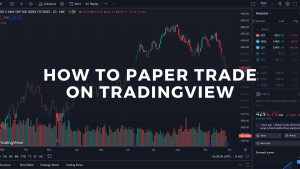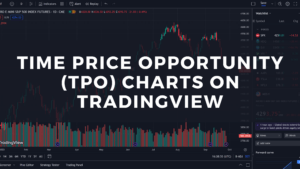The article on How to become A Successful Day Trader is the opinion of Optimus Futures, LLC.
- There are basic trading rules that ought not to be broken (except for rare instances which require more flexibility).
- Interestingly, many traders, especially new ones, break several of these rules on a daily basis without even realizing it.
- These commandments emphasize the importance of managing your risk, which is crucial for protecting capital and achieving long-term success in day trading.
In the fast-paced world of day trading, where market action can often be dynamic and sometimes even unpredictable, success is a result of meticulous strategy and discipline.
There are certain basic principles you have to know well. More importantly, you have to know when to follow them and when to bend the rules, so to speak. We can’t tell you how or when to do the latter, but we can go over the basic principles that will often guide your actions.
The 10 Commandments of Successful Day Trading

This is where the concept of the “10 Commandments of Successful Day Trading” comes into play. These commandments are not mere suggestions; they’re foundational concepts that guide traders through the complexities of the financial markets. Think of them as Rules of Thumb.
They encapsulate the essence of what it takes to not only survive but thrive in the high-risk day trading arena. From understanding market trends to managing risks, these commandments cover a broad spectrum of practices and mindsets essential for any trader aiming for longevity and profitability in this field.
Each commandment is a piece of wisdom distilled from the experiences of seasoned traders, offering a roadmap for navigating the volatile and often unforgiving landscape of financial trading. Shall we get started?
Disclaimer: Please keep in mind that this is just a guide and by all means does not encompass all the complexities that are related to futures trading. Following these rules does not guarantee success, while trading futures involves a substantial risk of loss. Do not trade with capital you can not afford to lose.
#1 Trade with the trend
In other words, don’t collide with a moving freight train. Instead, try to get onboard. Don’t be a bullish contrarian in a bear market or a bearish contrarian in a bull market unless you have a really compelling reason to do so. Otherwise, you’ll end up catching a falling knife, or simply getting crushed by the market’s opposing momentum.
This may seem so obvious and you probably have heard it so often, but how often did you think that the trend was overdone, only to be proven wrong? How often were you on the right side of the market only to close your position because you were afraid to reach the end of the trend and give back some of your profits? Naturally, at that time, you firmly believed that you were making the correct decision, only to witness the market continue its significant rally or decline
#2 Don’t try to pick tops and bottoms
If you haven’t figured it out yet, humans are really bad at predicting the future. You can prepare for and respond to a number of potential outcomes, but you can’t really pinpoint it with both accuracy and consistency. There are methods to anticipate market reversals; experiment with a few of them. But remember: if the market continues to move against your expectations, you need to have a proverbial Plan B to take advantage of that outcome.
#3 Plan your trade and trade your plan
Consider each and every trade as equally important. If you’ve done all your homework prior to entering a trade, your confidence level should be at its highest and even if that results in a loss, you should feel content that you followed your strategy. Remember that even good strategies can produce losses. You can’t win every time. So, plan your trade, and trade your plan to its maximum potential.
And by the way, if you haven’t yet explored the value of keeping a trading journal, then get on board. It’s another critical tool that not only helps you stay disciplined, but it’s a recording tool that forces you to be accountable for both your successes and mistakes.
#4 Manage your risk
Risk management is a critical aspect of successful trading. It’s the backbone of a sustainable trading strategy. At its core, it involves setting limits to protect your capital from significant losses. For example, a common practice is to use stop-loss orders. Another method is position sizing, where the amount invested in a single trade is kept to a small percentage of the total portfolio, ensuring that a single loss doesn’t significantly impact overall capital.
Diversification across different assets, markets, or even strategies is yet another key risk management strategy. It spreads risk and reduces the impact of a loss in any one area. If you want sustained longevity in the trading world, then heed this rule!
#5 Cut your losers and let your winners run
Taking small profits is not the “Holy Grail” of trading and can drain your account over the long-term. Taking big profits is. Small profits may seem safer than waiting for big swings. But that’s not where the “big money” is made. Plus, it’s a highly inefficient method.
So, learn to be patient. Understand and define your risk before placing a trade. Better yet, work with trading methodologies that prioritize big swings over small scalps that often may end up hemorrhaging your account (think the “death of a thousand stops”). Remember: the most successful traders aim to ride the totality of big swings; they don’t get on and off several times hoping to catch only the favorable micro-swings within the larger price swing.
#6 Be flexible and open minded
Being flexible and open-minded is crucial in trading. But here;’s the thingL you should have already planned for most contingency situations in your strategy or trading setup. If a market can have outcomes A, B, and C, you should have already planned for each likely scenario. In this case, it’s easier to maintain your flexibility and adaptability simply because you already know what to do.
#7 Don’t let a small loss turn into a disaster
Be aware of your finite capital and avoid transforming a potentially manageable loss into a catastrophic disaster. Losses that occur rapidly are often preferable as they get you out of the market fast.
But what gets in the way of many traders is not the losses but rather how they respond to them. We’ll say it straight: Don’t take losses personally and avoid revenge-trading or widening stop loss orders because you “want to give your trade a chance to turn around”.
#8 Don’t add to a losing position
Trading wisdom says: adding positions to a winning trade can be wise but adding positions to a losing trade is forbidden.
For those with a proven strategy, adding to a losing position may be an effective approach. This approach is more prevalent among investors than day traders but remains a strategy-dependent decision.
But if you’re adding to a losing position out of blind faith—meaning you’re hoping to get out of that losing trade faster when price turns around—then you’re doing it all wrong. It might be better to just exit the trade. There’s always another trade.
#9 Don’t neglect the importance of news and fundamentals
If you’re a purely fundamental trader or a purely technical trader, we will tell you to find a balance between the two or use elements of both in your decision making process.
In reality, markets are driven by the forces of supply and demand which are both reflected in price sooner than later. Furthermore, if you are a day-trader, news releases can cause short-term volatility spikes. Therefore, it is essential to be aware of upcoming news events at all times.
If you are a news trader, then you’re likely aware of the impact that news and economic reports can have in your trades. News trading offers significant benefits for informed decision-making in the financial markets. It involves acting on the latest economic reports and news releases, which can lead to swift and substantial market movements.
However, it’s important to have the right News Trading software to pull this off successfully. The right software can make a significant difference in successfully leveraging the volatility and opportunities presented by market news. We just gave you a link to one of our news platforms. And if you need a demo platform, try Optimus Flow. Give both a try!
#10 Don’t make impulsive trading decisions
You don’t want to be trading on a whim, a gut feeling or intuition unless it’s a variable within a larger trading system.
Many new traders don’t quite understand this, but it’s something that will come with experience. Gather the facts and remember that sometimes not taking a trade is also a trading decision. Don’t waste your time and capital on ineffectual activities. Just think about all those times where you have entered prematurely and lost.
As you can see, these are very basic, sensible rules to approach the markets.
And maybe you didn’t know, but most traders break 9 out of 10 of these rules daily.
So, keep it simple, efficient, most of all, stay disciplined!
Trading Futures and Options involves substantial risk of loss and is not suitable for all investors. Past performance is not necessarily indicative of future results.















